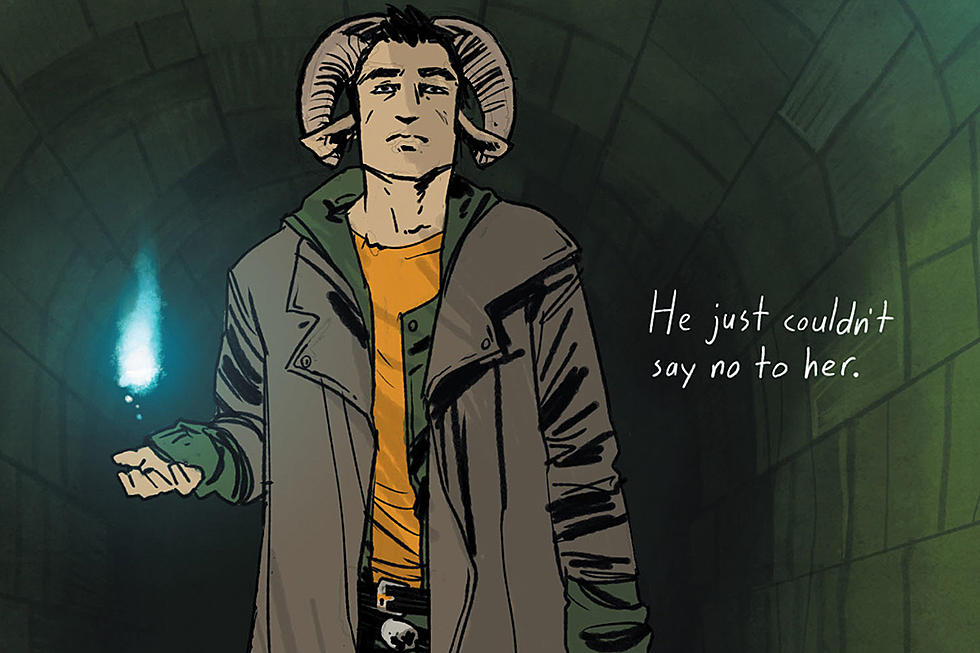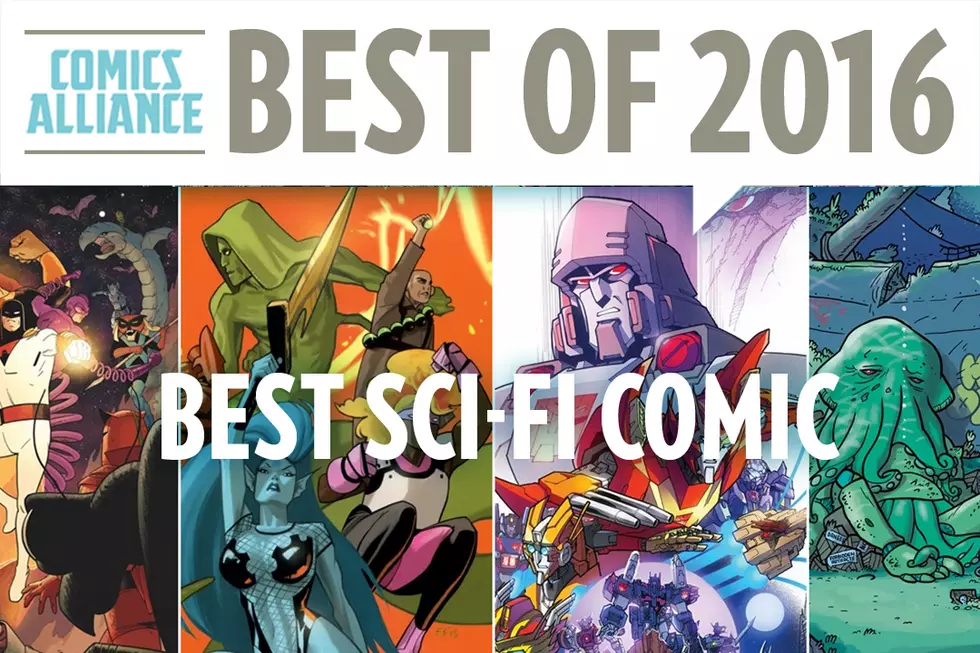
Best Sequential Art Ever (This Week): Wes Craig and Fiona Staples
The comic book, animation, illustration, pinup, mashup, fan art and design communities are generating amazing artwork of myriad styles and tastes, all of which ends up on the Internet and filtered into ComicsAlliance’s Best Art Ever (This Week). These images convey senses of mood and character — not to mention artistic skill — but comic books are specifically a medium of sequential narratives, and great sequential art has to be both beautiful (totally subjective!) and clear in its storytelling (not so subjective!). The words and the pictures need to work together to tell the story and create whatever tone, emotion and indeed world the story requires. The contributions of every person on a creative team, from the writer to the artist(s) to the letterers, are necessary to achieving a great page of sequential storytelling.
It is the special nature of comic books that we’re celebrating in this recurring feature: Best Sequential Art Ever (This Week).
'Deadly Class' #1
Story: Rick Remender
Art: Wes Craig
Colors: Lee Loughridge
Lettering and Design: Rus Wooten
Available: Comics shops (print) / Image (DRM-free download) / ComiXology (Apple + Android + Etc.)This is a beautiful comic with any number of great pages and some really exceptional coloring from Lee Loughridge. This page in particular really pops as a great collaboration from the whole team. The actual story content is moving and important; the line art is strong and beautiful; the coloring is dramatic; and the lettering is awesome. The whole package adds up to a page that is coherent without being too obvious all while being perfectly evocative of a moment of desperation and depression. As far as storytelling goes, this is pretty fantastic. There's a great symmetry to the whole page, too, that really clicks well with the reader's eye and adds an interesting depth to the art. After all, you could split this page in any number of ways and it would still make sense. In fact, if you read the left half of the art and then the right half of the art it works just as well as reading it the standard way. The lettering stands out in each and every panel thanks to the white backgrounds on the deep blue/purple and keeps the reader's eye on track.
'Mystery Society'
Mystery Society Story: Steve Niles Art and Colors: Fiona Staples Story: Steve Niles
Art and Colors: Fiona Staples
Lettering: Robbie Robbins, Chris Mowry, Shawn Lee
Available: Comics shops (print) / Amazon (print + Kindle) / ComiXology (Apple + Android + Web + etc.)Thanks to the re-release of Mystery Society in a new hardcover, I decided to revisit this delightful miniseries from Steve Niles and Fiona Staples. I'm really glad I did. Honestly, while Staples has really blown up with Saga and her work there is great, there's a lush depth to her art on Mystery Society that I think Saga is missing (by necessity, given its monthly schedule). This page is a great example of what Staples does so well in any circumstance: draw realistic characters and expressions, even in very weird situations. The first couple of panels move well but it's the third panel where this page really starts to excel. When drawing digitally, a lot of artists would opt to cut a corner by just mirroring a panel like this where twin characters are interacting. Staples has taken the time to give these twins their individuality, which adds a great dose of realism. Then, in the final two panels, the lightning bolt effect in the panel border helps tell the story as the characters disappear. It's a nice way to move the story along without making the reader feel like they're missing something. All of the lettering is placed exactly where it should be to help the reader's eye follow the story, although the final sound effect would stand out from the art more if it were in a contrasting color from the background.
Submissions
If you want to submit sequential art that you think is great, shoot us an email at comicsalliance-at-gmail-dot-com with “Best Sequential Art” in the subject line. Artists, writers and editors are welcome to submit their own work — we won’t tell.
More From ComicsAlliance





![The ‘Saga’ Continues: Catching Up With Brian K. Vaughan & Fiona Staples’ Masterwork [Sci-Fi Week]](http://townsquare.media/site/622/files/2016/09/saga-feat.jpg?w=980&q=75)



